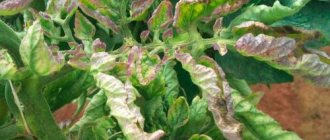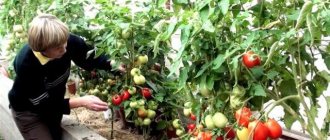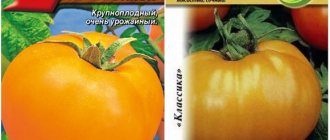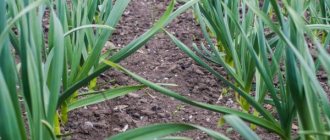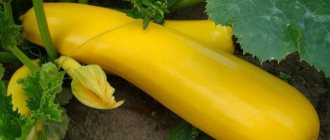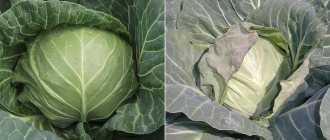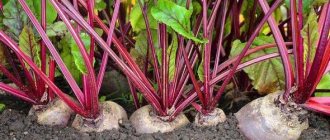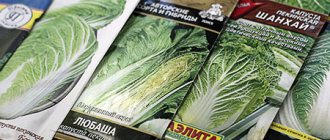- Updated: June 11, 2019
More than 30 years ago, an engineer from the Moscow region I.M. Maslov not only voiced, but also presented compelling arguments in favor of growing tomatoes using innovative methods. Over the years, this method has been tested repeatedly by gardeners from different parts of the country, its reliability and effectiveness have been proven.
How did Maslov's technique come about?
Before we begin, a little information about how this method of growing tomatoes came about.
For the first time, Igor Maslov’s method became known back in Soviet times. In the 80s, the gardener published two articles in the magazine “Homestead Farming” about his experiment, as a result of which he was able to get 70 kg of tomatoes from one bush.
The experiment was carried out on the Teplichny and De Barao varieties.
As a result, Maslov’s method received wide coverage on central television and interested not only summer residents of the Soviet Union, but also representatives of Bulgaria.
How to care for tomatoes after planting in a permanent place?
Basic care for plants planted according to Maslov’s method is not much different from growing tomatoes cultivated according to standard methods, and consists of the following activities.
- Watering must be done at the root, abundantly, but not too often, otherwise the plants will stretch. The maximum water requirement for tomatoes is during the first time after planting in a permanent place and during the period of fruit ripening.
- Loosening is done immediately after watering with high hilling of the stem to form new roots.
- The first feeding is carried out 1.5 weeks after transplanting the bushes into the garden with chicken manure (1:20) or mullein solution (1:10). Then, once every 10 days, fertilizing with complex mineral fertilizers is carried out.
- Special attention is paid to the garter. A lot of fruits form on the bushes; the branches can simply break if they are not supported. A rope, wire, or fishing line is stretched along the row between the stakes. The stems and bunches are tied to it with soft, non-traumatic material (wide bandage, gauze, rubber band).
- It is advisable to pick the fruits that are brown, with a stalk, this speeds up the ripening of the remaining tomatoes.
Planting tomatoes using the Maslov method became widespread at the time the method arose. The technology was praised, criticized, and discussed on radio and television. Over time, she was undeservedly forgotten. Now the technique has become popular again. Those who are not afraid to experiment and have at least once planted tomatoes using Maslov’s method are convinced of its effectiveness, because it allows them to obtain record high tomato yields without extra expenses.
Tags:
Share on social networks:
You might be interested in reading:
- The best varieties of white currants: how to plant and grow on the site correctly
The best varieties of apple trees with descriptions and photos: summer; autumn; winter. Features of planting an apple orchard
Home flowers that should be in every home. Useful and harmful indoor plants
The best varieties of pears for planting in the Moscow region and central Russia with photos and descriptions. How to plant a pear orchard correctly. Advice from an experienced gardener
The first method of growing tomatoes according to Maslov
First, let's talk about the first method, invented by Maslov. To implement it, tall seedlings with dense stems are needed. The second condition is large male nodes.
IMPORTANT! The seedlings must be strong and tall. Stretched seedlings are not suitable.
What seedlings are needed for this method?
For the first method, you will need tall, powerful seedlings. All foliage on the lower 2/3 of the stem is first removed.
Planting tomatoes
Seedlings are placed in beds or holes horizontally from south to north. 70% of the stem is covered with soil. Additional roots will form in this area.
Planting depth - at least 10 cm.
Basics of the Maslov method
RSC Energia design engineer Maslov, while cultivating tomatoes in his garden plot, noticed that the tomato by its nature is a creeping crop, not suitable for cultivation in the classic vertical position. The discovery formed the basis for the creation of an unconventional method of growing crops.
Observing the development of the bushes, the vegetable grower came to the conclusion that tomatoes have a weak root system that is not capable of providing sufficient nutrition for many fruits, but on the stem there is a large number of tubercles, which, when in contact with the ground, form roots.
Maslov decided to form a powerful root system in 2 ways.
- The sprouts were planted lying down, not vertically. The tomato plant was placed in a long furrow prepared in advance with the root system to the south and the top to the north. The root and 2/3 of the stem were buried in the soil. Growing up, the bush began to reach towards the sun to the south, gradually straightening itself and taking on a vertical position. On the part of the stem located underground, young roots were formed, which were several times more effective than the main root.
- Several stepsons were left on the plant, which were used to form an additional root system. The left stepsons were bent down to the ground and dug closer to the tomato stem so that the top remained on the surface. In less than a month, their own roots appeared, and the stepsons began to grow autonomously, catching up with the main bush in height, and later in the number of fruits.
The second method of growing tomatoes according to Maslov
Now a few words about the second method.
It is slightly different from the first one, but its essence is still the same - the formation of additional roots on the stem.
What seedlings are needed?
Seedlings that are prone to forming stepchildren are suitable.
Landing
Tomatoes are planted vertically as usual.
In the future, stepsoning is not carried out. On the contrary, the first stepsons are allowed to grow. Then they bend them to the ground and sprinkle them with soil. As a result, from one bush you will get several.
Variety selection
When selecting seed, preference should be given to those tomatoes that plant the first cluster above the 9-11th leaf. Next, you need to choose varieties that do not have short internodes, so that the entire space can be abundantly overgrown with root shoots.
Consequently, low-growing, verminous, determinate varieties are completely unsuitable for this method.
By giving preference to a tomato variety or hybrid that is labeled as indeterminate, you can safely plant any. The choice of color, shape, use is yours.
When purchasing seeds, you should remember that the author of the method recommends sowing 5-7% more than the planting area allows. This is done so that the best, strongest specimens can be selected from all the seedlings.
What does the yield depend on and does it increase 8 times?
Be that as it may, Maslov’s method is not a miracle or magic. The technique has a completely scientific basis.
The declared eightfold increase in yield is the maximum result that could be achieved. It depends on several factors.
Firstly, the resulting volume of fruit largely depends on the variety. Tall varieties give the best results, since they have a larger stem, which means there is a greater likelihood of developing additional roots.
Secondly, Maslov’s technique takes into account the characteristics of tomatoes as a vegetable crop.
Tomatoes have a weak root system, which is not able to feed the bush for large yields. If a summer resident helps the plant grow additional roots, then he automatically stimulates the yield.
After all, additional roots will provide an influx of moisture and nutrients, which will affect the formation of fruits.
ON A NOTE. Low-growing varieties increase their yield by about three times. Mid-ripening and late-ripening tomatoes grown indoors give an average yield of 5-6 times higher than the norm.
"Ukrainian giant"
This is a fairly productive variety with medium ripening periods (110-120 days from germination to fruiting). The plant is very tall, reaching up to 1.5-2 meters, so if you are not a supporter of these methods, be sure to use a trellis. It is best to cultivate in three stems. The root system of tomatoes of this variety is very powerful, so appropriate soil is required - light chernozems with humus, the application of complex mineral and phosphorus fertilizers in the first phase of growth. The fruits of the plant are fleshy, weighing up to 600 g, flat-round in shape, pale red in color.
Features of care when growing using this method
Now let's talk about the features of caring for tomato seedlings when growing them using this method.
The soil
When growing tomatoes using the Maslov method, special requirements are placed on the soil.
The soil should be loose, light and provide free access of moisture and air to the root system of plants.
The soil in the garden bed should be dug up, all debris removed, and fertilizers (ash, compost) added. A week and a half before planting tomatoes, spill the soil with hot water and cover with polyethylene.
Lighting
For this method, it is very important to provide the seedlings with sufficient light.
After all, if the seedlings do not receive ultraviolet light, then photosynthesis will be impossible, and, consequently, the growth of green mass will be impossible.
Humidity and temperature
High humidity is vital for seedlings if you grow seedlings according to Maslov.
It is recommended to purchase air humidifiers or spray manually every day. In this case, the water should be warm and settled so as not to “shock” the young plants.
Picking seedlings
You need to pick seedlings 2 - 3 times.
In this case, each time it is necessary to remove the lower leaves of the seedling, and when replanting, deepen the stem.
IMPORTANT! Maslov advises slightly holding the seedlings before planting them in open ground or a greenhouse. This is necessary so that the stems of the seedlings become stronger.
Care after planting seedlings
After the seedlings are planted in a permanent place, they need to be provided with appropriate care.
Feeding is carried out several times. The first feeding is carried out with liquid mullein or nettle-based green fertilizer. Next, drugs with a high potassium content are used.
Preference should be given to specialized mixtures for tomatoes.
Watering is carried out at the root.
Pinching is not carried out, but it is necessary to remove damaged leaves so that they do not become a source of infection.
After the stepsons grow, they are bent to the ground and sprinkled with soil to stimulate root formation.
Rules for planting tomatoes using the first method: lying down
Seeds for seedlings are sown 7-10 days earlier than with traditional cultivation. For seedlings, take boxes or pots filled with turf and peat soil. Early sowing is necessary so that by the time it is planted in the garden, the tomato will have formed a thick, long stem. During picking (transplantation), the plant is buried in the ground until the first true leaves.
The bed is prepared in advance. Long furrows are cut, 9-15 cm deep, oriented from north to south. Fill them with a mixture of fertile soil, 1 tsp. superphosphate, humus, ash. The furrows are shed generously with warm water.
Seedling sprouts are placed in the furrows with their tips facing north and roots facing south. Before this, all leaves are removed from that part of the stem that will subsequently end up underground. The lower two-thirds of the stem and root are buried 10-15 cm into the ground and carefully watered with water, being careful not to expose the buried part of the tomato. Depending on the variety, a distance of 1-1.2 m is maintained between rows.
Planting tomatoes using Maslov's method: lying down
If planting is carried out not in a greenhouse, but in open ground, seedlings are sown as soon as the threat of frost has passed. In cold weather, plants must be covered with film.
Advantages and disadvantages of the method
A few words about the advantages and disadvantages of using this method of growing tomatoes.
First the advantages:
- Increasing productivity in limited space.
- Tomatoes are formed low, close to the ground, which reduces the load on the stems.
- To obtain an acceptable number of fruits, a minimum number of seedlings is required.
- Each stepson can form his own ovary.
- Care is practically no different from care for “classic planting”.
Now a few words about the disadvantages of Maslov’s technique:
- The technique is poorly applicable for low-growing varieties, as they may begin to rot.
- In small varieties, a decrease in fruit size may occur.
- The bushes require additional space (planting distance - 1 m).
- The bushes begin to bear fruit later.
- Tomatoes ripen close to the ground, which can lead to rotting and the development of fungal diseases if weather conditions worsen.
- Plantings require more careful care.
Which varieties to choose
Varieties (hybrids) with determinate type bushes are not suitable for this method. You need to choose indeterminate tomatoes with unlimited growth vigor and long internodes. The shape, color of the fruit, and the timing of ripening do not play a role.
Important!
The author of the method recommended sowing 7% more seeds than required by the planting area. Sowing with a reserve allows you to select the most powerful specimens for planting.
Tomato Ukrainian giant
Mid-season (125 days), large-fruited (250-500 g) variety. The size of the fruit depends on agricultural technology and weather conditions. Bushes of indeterminate type reach a height of 2 m and require support and garters.
Fruit characteristics:
- color red;
- flat-round shape;
- taste rating 4.5 points.
The variety is resistant to late blight and responds well to fertilizing.
Pink giant tomato
The variety is loved for its tasty, large fruits. In terms of ripening time, the Pink Giant is mid-ripening (105-110 days), the type of bush is indeterminate, its height can exceed 2 m. The variety has strong immunity, it can be grown in open and protected ground conditions.
Fruit characteristics:
- pink colour;
- weight from 300 to 400 g;
- cameras from 5 to 6;
- rounded-flattened shape.
Value of the variety: long-term storage, transportability.
Tomato Giant
A salad variety. The fruits are used to produce sauces, juice, and consumed fresh. Ripening time is 105-110 days. The bush type is determinate, height is from 1.3 to 1.5 m. Fruit characteristics:
- color from pink to crimson;
- round shape;
- weight 300-400 g;
- the pulp is juicy, dense;
- cameras 5-6;
- The taste is excellent, the sugar content is high.
Tomato Russian giant
Medium-late, large-fruited variety with bushes from 1.8 m in height. The Russian giant has good immunity and matures in medium terms. The variety is valued for the good taste of the fruits and their large size (600-1300 g). Tomatoes do not crack; they are used for making salads and juices. The variety is grown in open ground, in greenhouses.
In what cases does it not work to use the Maslov method?
Maslov's method has some limitations in its use.
It will not be possible to use the method in areas on slopes, as well as with high groundwater levels and sandy soil types.
It is better to carry out standard planting if it rains often in the growing region. In cold summers you should also not use this method.
The fact is that tomatoes form practically on the ground. Under unfavorable conditions, they will begin to rot and become sick.
Rooting of stepchildren
Another method, according to Maslov, is to root stepchildren. Low-growing varieties are also suitable for this method. We must wait until the branches of the lower tier (stepchildren) grow to 25-30 cm. They must be bent to the ground, having first torn off the foliage from it. It is recommended to do this when the plant has not received water for 2-3 days, and the fragility of the stems is minimal, otherwise the stepson may break. You can pin the branch to the ground with wire and cover it with soil.
This method requires more space, bushes should be planted less frequently, taking into account future brood, approximately one seedling per 1 m². Overgrown beds increase humidity and promote the development of late blight.
Adviсe:
- On wide beds, pinching can be done radially in different directions.
- On narrow ones, it is better to bend the stepsons along the beds, so that when the bushes grow there is space for caring for the plants.
Do not forget about abundant watering and nutrition. During the growth of the bush itself, nitrogen fertilizers are used, and when the fruits begin to grow, phosphorus and potassium fertilizers are used. In addition, regular care is required:
- weeding;
- treatment for fungal diseases;
- loosening the soil.
The advantages of the method are that with a smaller number of seedlings, the yield increases several times, with the same material costs and time for care. A well-developed root system reduces the risk of tomato diseases.
Subscribe to our channel in Yandex.Zen! Click “Subscribe to channel” to read Otomatah.ru in the Yandex feed
Reviews from gardeners
Valentina Sergeevna (Kursk region):
“I learned about horizontal planting of tomatoes back in the 90s. My grandchildren told me that this is Maslov’s method several years ago.
I grow tomatoes this way all the time. A lot of fruits are obtained from a very small number of seedlings. This is good because there is less hassle with the seedlings.”
Rita Alekseevna (Oryol region):
“I tried Maslova’s method last year. I really liked it! I never thought that you could harvest SO MANY tomatoes from a dozen bushes! This time I will grow tomatoes again using this method, but taking into account last year’s mistakes.”
Anastasia Yurievna (Republic of Bashkortostan):
“I don’t have the opportunity to grow a large number of seedlings, so Maslov’s method has become a real salvation, because before I still had to buy tomatoes. And now there are so many of them that I even share them with my neighbors.”
Reviews
Tatiana
I have to plant the seedlings lying down, since they are always elongated. I’m not complaining about the harvest; we harvest a lot of tomatoes. I plant even weak seedlings this way; I don’t remove the stepchildren. I tie up only part of the shoots; the rest, lying on the ground, give roots on their own. At the end of summer, a lot of effort goes into cleaning the beds. The bushes entwine them with a continuous carpet.
Marina
I use the method, but I don’t orient the bushes to the cardinal points. I plant as necessary. I’m at the dacha no more than 2 times a week, so I don’t spoil my tomatoes with watering. I water them well on Sunday morning, and in the evening I sprinkle dry soil around the bushes so that the moisture lasts longer. I don’t grow bushes, I only tie up tall ones. I am always satisfied with the harvests. In autumn the bushes have to be dug up with a shovel; the roots are powerful.
Common mistakes
- Planting too close has a negative effect on yield. In order for the bushes to bear fruit, seedlings are planted in increments of 90-100 cm.
- The bushes are not tied up. An increase in yield naturally entails an increase in load. Therefore, when growing tomatoes according to Maslov’s method, they must be tied up.
- Growing unsuitable varieties in open ground. If you do not have a greenhouse, then do not plant late varieties, they will not have time to fully bear fruit before the onset of frost.
- Failure to comply with the technology of the method. A distinctive feature of this technique is horizontal landing. Therefore, do not plant tomatoes vertically, “the old fashioned way.”
Maslov's first method
The first method requires tall seedlings with thick stems and short internodes. This is the main principle: the seedlings are not frail and elongated, but strong. After transplanting, it will quickly grow powerful roots. Maslov explained that to grow such plants, early sowing with lighting is needed. He himself had not been able to garden since February, so he grew seedlings in the usual way and then grew them in a greenhouse.
When the tomatoes began to actively grow and bloom, Maslov planted them in open ground, but not vertically, but horizontally. In this case, 2/3 of the stem was cleared of leaves and placed in a groove. The depth of root and stem embedding is 10–12 cm. Immediately after planting, the top, left on the surface, literally lay on the ground. To make it rise, when planting, the bushes were oriented with their roots to the north and their tops to the south. Thus, the top of the head, striving towards the light, straightened. Then the tomatoes grew as usual: with a garter and formation of 1–3 stems.
The main principles of the method: seedlings are laid horizontally with their tops facing south
Answers to frequently asked questions
Does Maslov's method really work?
Yes, because it uses the ability of tomatoes to create additional roots.
How to plant tomatoes according to Maslov?
The seedling is laid horizontally from south to north and covered with earth to 60-70% of its length.
What are the features of caring for tomatoes planted this way?
In general, the care is the same. But be sure to remember the need for staking, as the stems need help to support the weight of the fruit.
Description of the method
Experts identify the following methods for growing tomatoes:
- in the horizontal plane;
- in a vertical plane.
Before Maslov’s method of growing tomatoes is described, it is necessary to talk a little about the theory. The scientist paid special attention to the fact that the tomato is a creeping crop that is not adapted to grow on a vertical surface. For example, cucumbers have special antennae with which they are able to cling to various supports. Tomatoes do not have such adaptations. That is why vertical growth is more labor-intensive for them.
Thus, the roots of tomatoes are very weak, and the productivity of the plant directly depends on them. On the stem of the plant there are special pimples, which are the rudiments of roots. When a shoot has the opportunity to grow roots along the entire length of the stem, the overall volume of the root system increases, and this can provide more nutrients to the fruit and increase the yield.
Growing tomatoes according to I.M. Maslov’s method involves planting seedlings in the soil in a horizontal position, and not in a vertical position. It’s also worth keeping the seedlings a little longer so that they get stronger and grow more, because the larger the plant’s stem, the better its root system will be formed. Growing tomatoes using this method completely eliminates planting. The lowest branches of a tomato are usually used for additional nutrition with necessary substances.
Large tomato variety “Big Momma”: characteristics and description
Description of the essence of the method
Story
Igor Mikhailovich Maslov is an amateur breeder from the Moscow region . He developed a new planting method, using which almost any variety of tomatoes gives increased yield.
A description of this method first appeared in articles in the magazine “Homestead Farming” in the late 80s of the 20th century.
The peculiarity of the method is that the grown seedlings are planted in the ground lying down.
Igor Mikhailovich thought about the fact that tomatoes should not grow vertically. After all, the bushes are tall, they need to be tied up, and the plant does not have tendrils, like grapes or cucumbers, that can be caught on. This means, logically, tomatoes should grow horizontally, that is, spread along the ground .
The principle of the method is that it is necessary to fully use the potential of the plant, which is used by less than 50% during conventional cultivation. Additional roots that grow in tomatoes planted horizontally with rooting of the stepsons help with this.
On the stems of tomatoes there are pimples - the beginnings of roots. This is further proof that a tomato should grow horizontally.
Advantages and disadvantages
The method has many advantages:
- Significant increase in yield per bush.
- The fruits grow low, right from the ground.
- A minimum of seedling material is used.
- All non-deepened stepsons form ovaries.
But this method also has disadvantages:
- Low-growing tomatoes may rot when deepened.
- Due to an increase in the number of fruits, their volume may decrease (more typical for bushes with medium-sized tomatoes).
- The distance between bushes should be increased to one meter, which owners of small plots do not like.
Why does the tomato yield increase 8 or 10 times?
Productivity when planting according to Maslov's method increases significantly . Tomatoes have a weak root system that cannot provide a large harvest. Therefore, if a gardener allows tomatoes to grow as nature intended, then the plant will actively take root, put out additional roots, which will provide more nutrition, increasing productivity.
Low-growing tomatoes grown using Maslov's method increase yield by 300%, and tall tomatoes - by about 8-10 times!
Technologies for growing tomatoes. Reflections on the experience of famous gardeners
There are as many tomato lovers as there are technologies for growing them.
Beginner vegetable growers, of course, adhere to the recommendations described in the literature, but then everyone makes some changes, adapting the technology to their weather, their soils, their needs, capabilities and desires. One needs a gigantic harvest to feed a large family, another is ready to be content with only summer salads, and considers winter preparations unnecessary, since canned fruits do not correspond to the gardener’s nutritional principles. There are as many tomato lovers as there are technologies for growing them.
However, while some simply grow tomatoes, others advertise their technologies, considering it necessary to introduce them into industrial vegetable growing.
It is difficult for a gardener to grow stocky, strong seedlings on a windowsill; it is difficult to create comfortable conditions for them. That’s why she reaches out to the light outside the window, turns pale, suffers either from excess water in the boxes, or from drying out soil and “atmospheric” drought in the room. As a result, gardeners end up with frail, rickety dystrophics.
It is difficult for a gardener to grow stocky, strong seedlings on a windowsill.
How then to plant such a long tree in a garden bed? For a long time, everyone realized that instead of a bed there should be a continuous ditch (or ditch), quite deep and long. It is very convenient to place a long plant stem in it - it will not break. And raise the top so that the top few leaves are above the level of the bed. And it’s easy to water when preparing for planting - throw in a hose, the water itself flows where it’s supposed to.
The scientific basis for the method is solid: tomato plants are capable and habitual of growing new roots from the stem. It seems to me that gardeners use this method in all ages and at all times. However, this is not yet a technology: a method available to every gardener will turn into it when the implementation of all stages leads to a predictable harvest.
Ads by
Methods of growing tomatoes I.M. Maslova
Method one. The experimenter created excellent conditions for the seedlings, so he did not have dystrophic plants.
To make them so, he planted good seedlings vertically in the greenhouse and helped them stretch. And then he planted this sick one lying down in the furrows. Or seedlings are planted in the usual way. But the first stepsons are not removed, but are given the right to grow so long that they can be laid on the surface of the bed and covered with earth. Of course, all the leaves must be removed and the tops left above the soil. In about a month, the stepchildren will get used to their new role and grow roots and stems. Their fruits are formed closer to the mother stem, so they can lie on the ground. All these techniques were needed for the plant to grow a large, voluminous root system. This method allows you to turn a groove into a groove, that is, you don’t have to lift tons of earth “uphill.”
The more powerful the root system of tomato seedlings, the better
Second way. It will not be able to take root in garden beds because it is labor-intensive: after all, it is necessary not only to dig fairly deep ditches, but also to place them in the north-south direction so that the plant can receive all the solar energy that it is capable of receiving. According to Maslov, this technology option is suitable for industrial cultivation of tomatoes in fields.
Both methods are based on the ability of plants to grow a root system. Who doesn’t want to, after performing simple manipulations, collect 70 kg of fruit from each bush?
And the gardeners began their experiments, based on the results of which they came to the following conclusions:
- It's not a matter of overgrown seedlings with frail stems - such plants take a long time to adapt after planting. It is necessary to sow early using this technology; the plants should be grown strong, powerful, with thick stems, because “a thick stem with shortened fruiting axils” is the main condition for success; it will give a powerful root system.
- The gardeners even deliberately, as Maslov advised, sowed early in order to grow such frail seedlings. And the same varieties were grown in the usual way at the correct sowing time - using a long-tested conservative method. Result: the skinny, lanky ones took a long time to come to their senses after planting in the ditches, responded more slowly to watering and fertilization, and ultimately produced a smaller harvest than their conservative brothers.
- Adventitious roots actually form, but they are frail; they do not grow along the entire length of the buried part of the shoot, but only in the place where the tip comes out of the ground, and where they had already grown when the seed was sown.
- It is not the height of the seedlings that is important, but its age. The bushes must be strong, stocky, healthy and must be adapted to open ground by hardening. Then, even with conventional vertical growing, the bushes produce excellent yields.
To obtain a decent harvest, it is not the height of the seedlings that is important, but its age
5. Quote: “Even in the vegetable growing textbooks of the 50s and 60s, it was shown with pictures how to plant overgrown seedlings. And precisely obliquely, almost lying down.” That is, this method has long been known, and without Maslov, gardeners knew that when tomato bushes are hilled, adventitious roots begin to grow. 6. Ganichkina has a different opinion: overgrown seedlings should be planted vertically in the ground. So that the depth level is no higher than when the plant was alive in a seedling box or cup. After adaptation, you can begin hilling, but not immediately hide the entire stem in the ground, but gradually. The reason is simple: the roots grow strongly - the green mass grows actively - flowering begins later - harvesting begins later. 7. During the difficult preparation of the trench beds in the spring, you will also have to work hard in the fall: after harvesting, you need to remove the roots, but they simply cannot be pulled out by hand, they have to be dug up. There is a lot of time wasted both in preparing the grooves and in cleaning up spent roots. 8. The method is not suitable for the Urals: while the plant is lying down growing its root system, summer ends in August. Tomatoes planted vertically have time to produce a harvest, while those grown in the Maslov style by the same time only begin to show green ones.
For the Urals, Maslov’s method is not suitable - tomatoes do not have time to ripen in open ground
9. However, this method has a continuation in greenhouses. When growing tall plants (indeterminate tomatoes), the first cluster is tied above the 9th leaf. So they bury the “extra” part of the stem into the grooves so that the brushes are lower, closer to the ground. 10. Many sowed in February and early March. The seedlings were growing. When planting lying down, it took a long time to grow new roots, this slowed down the entire plant for about 2 weeks. This is especially noticeable if the first flower cluster has already formed. There are no breadwinners for the fruits that have set, they grow themselves. That is why there is no first and earliest harvest. 11. I tried this method too. There was a lot of greenery growing: if it had been cabbage, there would have been enough food for a whole farm of rabbits. And they just tore everything off and threw it away. They tormented the plants and gave themselves extra work. On soil well fertilized with humus (there were cows on the farm, there was plenty of manure), I did not observe a huge, powerful, branched root system. There were two lobes: one was a real native root, the other was near the surface of the earth, but there was still no main root. The root system was fibrous and located superficially. Extra watering was required. 12. Using Maslov’s method, a Moscow gardener grew tall tomatoes in a greenhouse. Grooves were dug in the garden bed in the greenhouse, and seedlings were planted in them lying down to build up a powerful root system. However, the record amount of 30 kg from the bush did not come easy. Spring heating of the greenhouse and autumn heating with wood (night shift of the fireman) were required until November. The plants were also given additional nutrition: jars with nutrient mixtures were placed on each stem (tomatoes can grow roots in the air in order to reach water, which is at a very close distance), so that the upper clusters could also gain weight and ripen. And the stepsons were buried.
We draw conclusions Only with fanatical care of plants (constant attention, summer life in the country, growing in a greenhouse heated from early spring to late autumn) can you get a lot of fruits on one plant, or rather, by your actions, force it to give a rich harvest. And in open ground - a maximum of 10 kg for tall tomatoes - this is the limit for Maslov’s technology.
Only with fanatical care in the greenhouse is it possible to get a rich harvest of tomatoes
Method of growing tomatoes F.M. Tarasenko
Tomato lovers are familiar with the name F.M.
Tarasenko. Not being a specialist agrarian, he managed to create several varieties of tall tomatoes, calling them lianas. The variety 'Jubilee Tarasenko' is especially interesting. You can find it, like other varieties of tomatoes, on our market, where many products from different online stores are presented. Select tomato seeds.
Tomato Boni MM series 1+1 26 RUR
Russian Vegetable Garden
Tomato Rich choice F1 54 rub.
Russian Vegetable Garden
Tomato Taimyr 29 RUR
Russian Vegetable Garden
Tomato Riddle pink 14 RUR
Russian Vegetable Garden
To grow this miracle, we had to create a new technology for growing indeterminate tomatoes.
What's the point? In planting seedlings. The plant itself is huge, and the root system matches it. For seedlings 60 days old, you need a hole, which many gardeners dig for planting currants: 50cm x 50cm x 40cm. There should be a distance of 1 meter from the center of one pit to the center of the other. Each pit expects 2 buckets of humus, 4 cups of ash, 50 g of complex fertilizer to be poured into it; all this should be mixed with the top fertile layer removed when creating the pit itself. Grow seedlings in cups to preserve the roots when transplanting. In each hole, plant 2 plants in opposite corners. Water with very warm water, take 3 g of potassium permanganate for each bucket.
In stepsoning. When growing 'Jubilee Tarasenko', the stepsons are removed when they grow to 3-4 cm. There is no information about other varieties and hybrids on a special technique for tearing off or plucking the stepsons. By mid-July, the height of the plants should be almost 3 m. You need to pinch the shoots.
In crop regulation. Over the entire growing period there will be only 4 or 5 clusters on each stem. That is, there will be 8-10 tassels on two plant stems. All fruits cannot ripen before frost. Therefore, we have to normalize the number of clusters - cut off the top ones so that there are only 6 clusters on the bush.
In forming a bush and tying it to supports. The best supports are trellises. Not only the stems are tied, but also the brushes.
According to Tarasenko’s method, you need to tie up not only the stems, but also the brushes
All other technological methods do not differ from those needed for any giant tomatoes. The whole complex of measures will allow you to get 17 kg of fruit from each plant. Quite a lot! What is the experience of gardeners? But it’s not there... You can find a huge number of discussions about Tarasenko varieties, the taste and beauty of the fruits, the love of fruits with a spout, about collectors from whom you can buy seeds. But not a word about the most important thing, about technology. Therefore, I will tell you about my own experience.
In those early years, when everyone was sick with Tarasenko varieties, I also got sick with them. However, things didn’t go further than digging a few holes. In the fall (it is at this time that it is recommended to prepare holes), my husband refused this work: we were still actively building sheds, there was no time to remove soil for an unknown purpose. And in the spring of desire there was enough pit for four. And then the calculations began on what kind of porridge I should feed my husband so that during a shift (8 hours of working time) he could bring to the surface a cubic meter of soil, the mass of which is unknown, but approximately the same as a cubic meter of water weighs, that is, a ton. And this is only for planting 8 plants.
So we limited ourselves to four, and the rest were planted using our usual technology. Because in those years, we sold buckwheat only with coupons (for diabetics), but it was precisely this that allowed us to remove a cubic meter of soil per shift. Other porridges do not reach this intensity of labor. It seems that these pits have become stumbling blocks for many. Let the yield be lower! But there will also be less work.
Tarasenko grew his tomatoes in a warmer place than central Russia (in Shostka), so gardeners in Altai and the Novgorod region need to reconsider the timing of pinching and quantity. And depending on the specific weather in the year of cultivation, leave not 6 bunches of fruit, but perhaps less.
We preferred the less labor-intensive method to Tarasenko’s method.
The root system begins in a capsule
Gardeners have long been using milk and kefir packaging to grow seedlings: they have quite suitable sizes, and the height can be made as required.
That's where the 70 x 70 x 70 mm size came from. Such a “fermented milk” box is filled with soil mixture and a seed is sown in each corner. When real leaves begin to appear, you can see which plant is the strongest. So they leave him. At this age, the stem is thin and flexible. A trickle of water bends him to the ground. But the gardener himself needs to do this by drawing a fairly deep groove from the plant to the opposite corner of the box. And place the stem in this groove, sprinkle it down to the cotyledon leaves. And the top, as befits a plant, should stand straight and look up. And then F.I. Rigin waters the seedlings with a weak solution of potassium permanganate. Do this several times, no other feeding is required. After about 2 weeks, the plant develops a powerful root system.
Before planting in the ground, Rigin pre-plants the seedlings in larger bags. These can also be milk bags, but with a capacity of one liter. These are the same boxes, but cut differently - they have not the top removed, but one of the sides - it’s convenient to place seedlings in such containers! And fill all the free space with soil mixture. This is done for a new stage of root growth. In 2 weeks it will not be just a smudge of roots, it will be a powerful, dense broom. It is clear that a small hole for such a root system will be small. Because they dig it, it is also quite large, approximately 40cm x 40cm x 30cm. Fill with a nutrient mixture and plant the plants lying down, but do not cover them completely with soil. After a few days, the exposed top of the stem will rise on its own as it begins to grow. After a week, you need to fill the beds with plants with peat, straw, old sawdust, and feed the bushes with mullein.
Each gardener chooses his own preferred method of growing tomatoes.
Are there any secrets in these methods?
It’s unlikely: what’s good in Crimea may leave Tomsk without a harvest. But every technology, every method is an opportunity to find something truly unique for your garden. Some will be happy to dig wide and deep holes, while others will plant seedlings 15 cm high in the ground, for which they will make a hole with the fang of a flat cutter and the volume of a yogurt cup.
Features of preparing and caring for seedlings
When growing seedlings, the following conditions must be observed:
- Provide a sufficient amount of light; if there is a lack of natural light, supplement it with fluorescent lamps.
- Use air humidifiers or spray 1-2 times a day.
- Ensure optimal temperature, +18-25 degrees during the day, +12-15 degrees at night.
For the first 2-3 days after germination, it is better to illuminate the seedlings around the clock so that they develop well.
According to Maslov’s method, seedlings need to be kept a little longer so that they become stronger , develop a powerful root system and have a thick stem.
Picking
Maslov noted that growing seedlings requires the same picking as with traditional growing of tomatoes. During growth, seedlings pick up at least 3 times.
Step-by-step picking instructions:
- Holding the seedling by the cotyledon leaves, separate it with a spatula and remove it from the ground.
- Carefully (preferably with nail scissors) trim off a third of the root.
- Make a hole in the pot and deepen the seedlings to the growing point.
- Sprinkle with soil and press it down a little.
- Water moderately with settled water.
- Protect from sunlight for 2-3 days.
After each picking , the lower leaves are removed and the tomato is buried so that a powerful root system develops.
